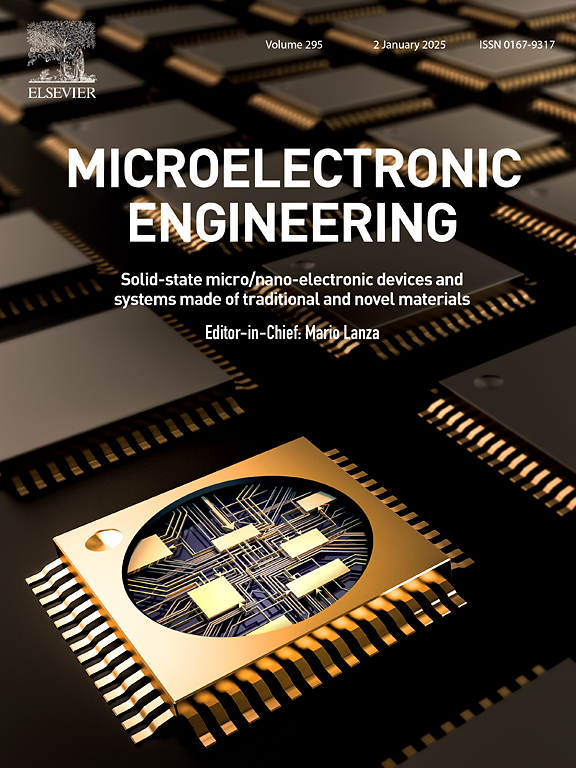Theoretical insights into the impact of border and interface traps on hysteresis in monolayer MoS2 FETs
IF 3.1
4区 工程技术
Q2 ENGINEERING, ELECTRICAL & ELECTRONIC
引用次数: 0
Abstract
Threshold voltage hysteresis in two-dimensional transistor transfer characteristics poses a bottleneck in achieving stable 2D CMOS integrated circuits. Hysteresis is primarily attributed to traps at the channel/oxide interface as well as in the oxide. In this study, we present a physics-based self-consistent modeling framework to investigate the impact of border and interface traps on and apply it to monolayer (1-L) MoS2 field-effect transistors (FETs). The transient trapping and detrapping of charges during gate voltage sweeps across a wide range of frequencies and temperatures is analyzed using a two-state non-radiative multi-phonon (NMP) model. Our results reveal distinct dynamic responses for slow border and fast interface traps, with border traps exhibiting slower time constants due to larger relaxation energies and interface traps showing fast nuclear tunneling-dominated dynamics resulting from the smaller relaxation energies. These simulations highlights the critical role of the spatial and energetic distributions of the traps in determining , providing insights into the stability of 2D FETs and paving the way for improved device engineering.
边界和界面陷阱对单层MoS2场效应管迟滞影响的理论见解
二维晶体管传输特性中的阈值电压迟滞ΔVh是实现稳定二维CMOS集成电路的瓶颈。滞后主要归因于沟道/氧化物界面和氧化物中的陷阱。在这项研究中,我们提出了一个基于物理的自一致建模框架来研究边界和界面陷阱对ΔVh的影响,并将其应用于单层(1-L) MoS2场效应晶体管(fet)。利用双态非辐射多声子(NMP)模型分析了栅极电压在宽频率和温度范围内扫描时电荷的瞬态捕获和去捕获。我们的研究结果揭示了慢边界和快界面陷阱的不同动态响应,边界陷阱由于较大的弛豫能而表现出较慢的时间常数,而界面陷阱由于较小的弛豫能而表现出快速的核隧道主导动力学。这些模拟突出了陷阱的空间和能量分布在确定ΔVh中的关键作用,提供了对二维场效应管稳定性的见解,并为改进器件工程铺平了道路。
本文章由计算机程序翻译,如有差异,请以英文原文为准。
求助全文
约1分钟内获得全文
求助全文
来源期刊

Microelectronic Engineering
工程技术-工程:电子与电气
CiteScore
5.30
自引率
4.30%
发文量
131
审稿时长
29 days
期刊介绍:
Microelectronic Engineering is the premier nanoprocessing, and nanotechnology journal focusing on fabrication of electronic, photonic, bioelectronic, electromechanic and fluidic devices and systems, and their applications in the broad areas of electronics, photonics, energy, life sciences, and environment. It covers also the expanding interdisciplinary field of "more than Moore" and "beyond Moore" integrated nanoelectronics / photonics and micro-/nano-/bio-systems. Through its unique mixture of peer-reviewed articles, reviews, accelerated publications, short and Technical notes, and the latest research news on key developments, Microelectronic Engineering provides comprehensive coverage of this exciting, interdisciplinary and dynamic new field for researchers in academia and professionals in industry.
 求助内容:
求助内容: 应助结果提醒方式:
应助结果提醒方式:


